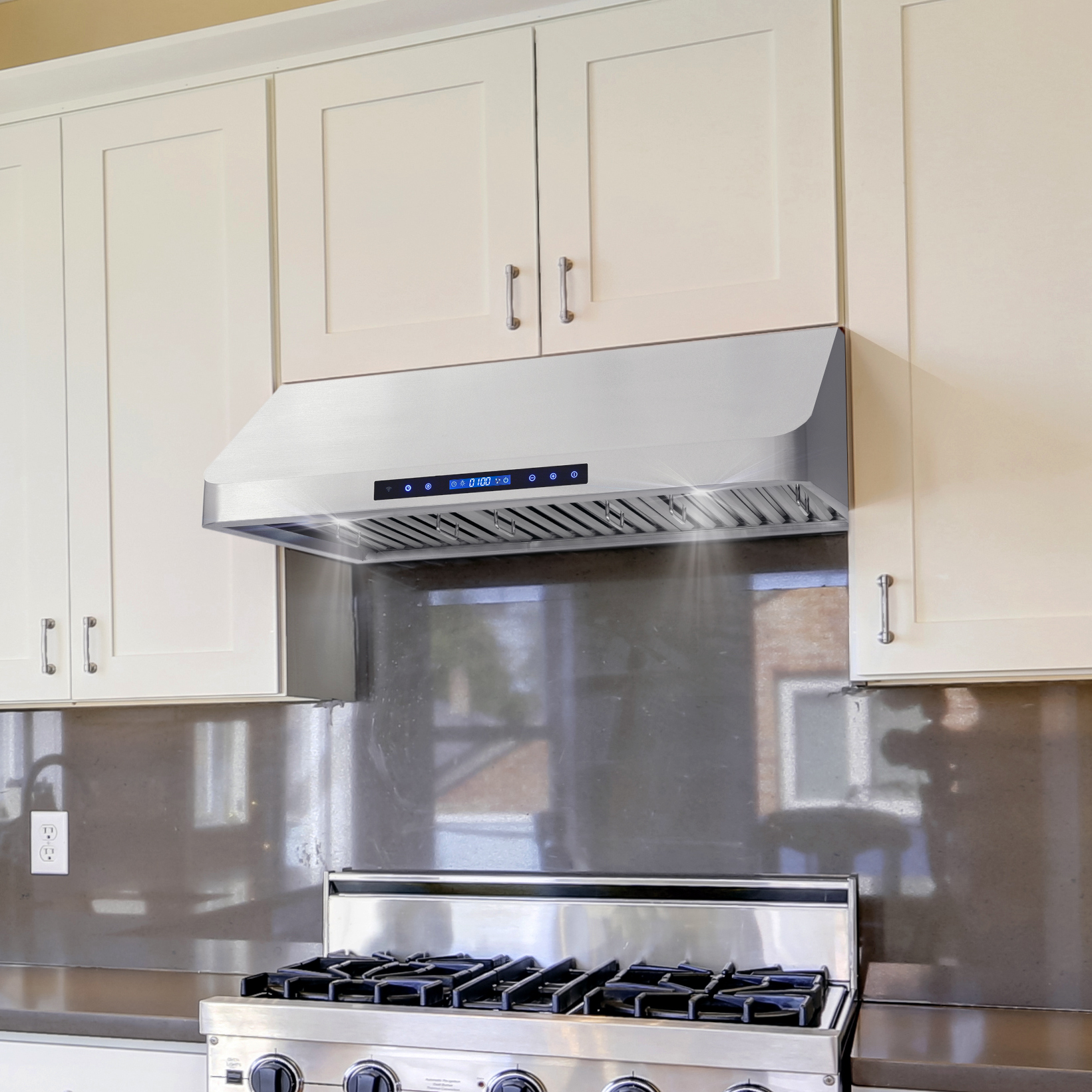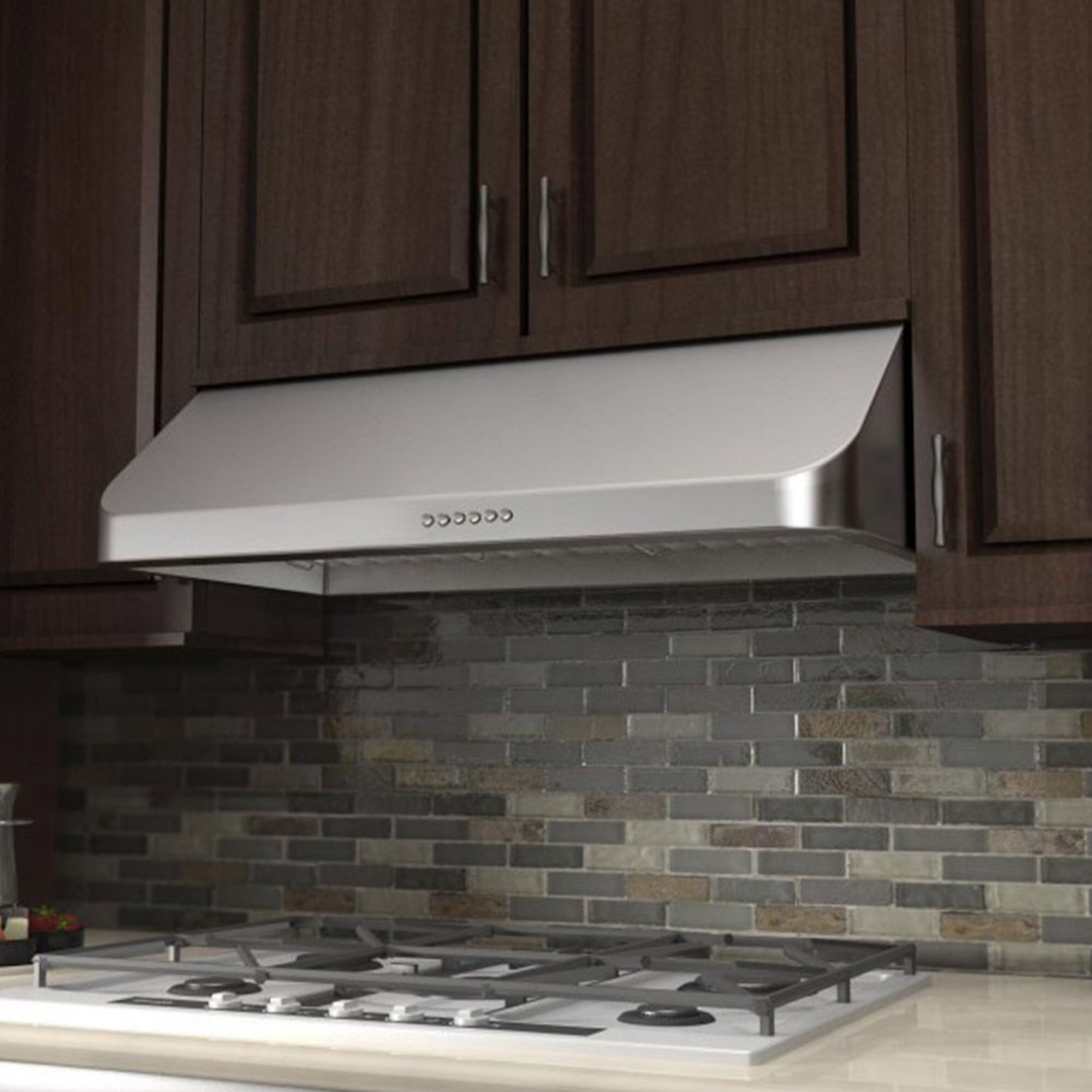Top 5 Best Under Cabinet Vent Hoods

Choosing the right under-cabinet range hood can significantly improve your kitchen’s air quality and overall cooking experience. This guide dives into the features and comparisons of five top-performing models, helping you make an informed decision. We’ll explore key specifications and highlight the differences between premium and budget-friendly options.
Top 5 Best Under Cabinet Vent Hoods: Features & Comparisons
Below is a comparison table showcasing five popular under-cabinet range hoods, highlighting their key features and price ranges. Remember that prices can fluctuate, so always check current retail listings for the most up-to-date information.
| Brand | Model | Key Features | Price Range |
|---|---|---|---|
| Broan | Range Hood Model A | Powerful CFM, LED lighting, multiple speed settings, dishwasher-safe filters | $200 – $300 |
| Cosmo | Range Hood Model B | Sleek design, quiet operation, convertible to recirculating mode, multiple filter options | $300 – $400 |
| FOTILE | Range Hood Model C | High CFM rating, touch controls, automatic shut-off, stainless steel construction | $400 – $500 |
| Whirlpool | Range Hood Model D | Energy-efficient operation, bright LED lighting, easy-to-clean filters, multiple fan speeds | $250 – $350 |
| Bosch | Range Hood Model E | Premium build quality, exceptionally quiet operation, powerful suction, advanced filtration | $500 – $700 |
Five Key Features Differentiating Top-Tier and Budget Under-Cabinet Vent Hoods
The differences between high-end and budget under-cabinet range hoods are significant, impacting both performance and longevity.
Best under cabinet vent hood – 1. CFM (Cubic Feet per Minute) Rating: Top-tier hoods boast higher CFM ratings, meaning they can remove more air per minute. A higher CFM is crucial for effectively clearing smoke, grease, and odors, especially in larger kitchens or when cooking intensely. Budget models often have lower CFM ratings, leading to less efficient ventilation.
2. Noise Level: Premium hoods often utilize quieter motors and advanced noise-reduction technologies. This results in a more pleasant cooking experience, especially during longer cooking sessions. Budget models can be significantly louder, making them disruptive during conversation or while watching television.
3. Filtration System: High-end hoods frequently employ multi-layered filtration systems, effectively trapping grease, odors, and other airborne particles. These often include dishwasher-safe filters for easy cleaning. Budget models may have less effective filters, requiring more frequent cleaning and potentially leading to decreased performance over time.
4. Build Quality and Materials: Premium range hoods are typically constructed from higher-quality materials, such as stainless steel, ensuring durability and a more sophisticated look. Budget models might use less durable materials, which may be prone to damage or rust over time.
5. Lighting: Top-tier models often include bright and energy-efficient LED lighting, providing excellent illumination of the cooktop. This improves visibility and enhances the cooking experience. Budget models may have less effective lighting, potentially hindering visibility.
Pros and Cons of Each Model
Understanding the advantages and disadvantages of each model helps in making a suitable choice based on individual needs and budget.
Broan Range Hood Model A:
- Pros: Affordable, decent CFM, easy to install.
- Cons: Basic features, may be noisy at higher speeds.
Cosmo Range Hood Model B:
- Pros: Stylish design, quiet operation, versatile.
- Cons: Mid-range CFM, slightly more expensive.
FOTILE Range Hood Model C:
- Pros: High CFM, modern features, durable construction.
- Cons: Higher price point.
Whirlpool Range Hood Model D:
- Pros: Energy-efficient, good lighting, easy to clean.
- Cons: CFM might be lower than some competitors.
Bosch Range Hood Model E:
- Pros: Premium quality, quiet, powerful suction.
- Cons: Highest price point.
Importance of CFM Ratings
The CFM (Cubic Feet per Minute) rating indicates the amount of air a vent hood can exhaust in one minute. This is crucial for effective ventilation. A kitchen’s size and cooking style significantly influence the required CFM. For instance, a large kitchen with frequent high-heat cooking requires a higher CFM rating than a smaller kitchen with infrequent cooking. A general guideline suggests 100 CFM per 100 square feet of kitchen space, but this can vary depending on cooking habits. For example, someone who frequently deep-fries will need a higher CFM than someone who primarily cooks light meals.
Choosing a vent hood with a CFM rating appropriate for your kitchen’s size and cooking style is essential for optimal ventilation and air quality.
Installation & Maintenance of Under Cabinet Vent Hoods: Best Under Cabinet Vent Hood

Installing and maintaining your under-cabinet vent hood properly ensures efficient kitchen ventilation and extends its lifespan. This guide provides a step-by-step installation process and Artikels essential maintenance tasks. Remember to always prioritize safety and consult your specific vent hood’s instruction manual for detailed guidance.
Under Cabinet Vent Hood Installation
Proper installation is crucial for optimal performance and safety. Failure to follow these steps could lead to inefficient ventilation or even safety hazards. Always turn off the power to the circuit before beginning any electrical work.
- Measure and Mark: Carefully measure the space above your cooktop and mark the location for the vent hood, ensuring sufficient clearance from the heat source and cabinetry.
- Attach the Mounting Bracket: Securely attach the mounting bracket to the underside of your cabinet according to the manufacturer’s instructions. Use appropriate screws and ensure they are firmly in place.
- Connect the Ductwork: Attach the ductwork to the vent hood’s exhaust port. Ensure a tight and secure connection to prevent air leaks. Use appropriate connectors and sealant if necessary.
- Hang the Vent Hood: Carefully hang the vent hood onto the mounting bracket, ensuring it is level and securely fastened.
- Connect the Electrical Wiring: Connect the vent hood’s electrical wiring to the appropriate circuit, ensuring proper grounding. Consult a qualified electrician if you are unsure about any aspect of the electrical work.
- Test the System: Turn on the power and test the vent hood to ensure it operates correctly. Check for any air leaks or unusual noises.
Maintenance Tasks for Optimal Performance
Regular maintenance is key to keeping your vent hood running smoothly and effectively removing cooking odors and grease. Neglecting maintenance can lead to reduced efficiency, fire hazards, and premature failure.
- Filter Cleaning: Clean your filters regularly, at least once a month for heavy use, or every few months for lighter use. The frequency depends on your cooking habits and the type of filter.
- Ductwork Inspection: Inspect the ductwork for any blockages or damage at least annually. Grease buildup can restrict airflow and even pose a fire risk.
- Exterior Cleaning: Wipe down the exterior of the vent hood regularly with a damp cloth and mild detergent to remove grease and splatters.
Troubleshooting Installation and Maintenance Issues
Several issues might arise during installation or maintenance. Addressing these promptly is crucial to prevent further problems.
If your vent hood is making unusual noises, check for loose parts or obstructions in the ductwork. Ensure all connections are secure.
If your vent hood is not venting effectively, check for blockages in the ductwork or a clogged filter. Also, ensure the exhaust fan is running at the correct speed.
If the vent hood is not turning on, check the circuit breaker or fuse box to ensure the power is on. Also, verify the electrical connections are secure.
Cleaning Different Types of Vent Hood Filters
Different filter types require specific cleaning methods. Always refer to your manufacturer’s instructions for detailed guidance.
- Mesh Filters: These can usually be washed in warm, soapy water. Ensure they are thoroughly rinsed and completely dry before reinstalling.
- Charcoal Filters: These are generally not washable and need to be replaced periodically, usually every 6-12 months depending on usage. Check the manufacturer’s recommendations for replacement frequency.
Choosing the Right Under Cabinet Vent Hood for Your Kitchen

Selecting the perfect under-cabinet vent hood involves more than just considering the CFM (cubic feet per minute). A well-chosen hood enhances both the functionality and aesthetics of your kitchen, ensuring efficient ventilation and a cohesive design. This guide will help you navigate the key factors to make an informed decision.
Noise Level Considerations
The noise level of a vent hood significantly impacts your cooking experience. A loud hood can be disruptive, especially during quiet meals or conversations. Higher CFM hoods often operate at higher noise levels. Look for models with sound ratings (often measured in sones) and compare them. For example, a hood rated at 1 sone is quieter than one rated at 5 sones. Consider your kitchen’s layout and how much noise you’re willing to tolerate. An open-plan kitchen might require a quieter model compared to a kitchen with a separate cooking area.
Style and Design Integration
The vent hood’s style should complement your kitchen’s overall design. Modern kitchens often benefit from sleek, minimalist hoods with stainless steel finishes. Traditional kitchens might suit hoods with more ornate details or a warmer metallic finish like copper or brushed nickel. Consider the color, material, and overall aesthetic of your cabinets and countertops when making your selection. A mismatched hood can detract from the overall look of your kitchen, while a well-chosen one can enhance it. For instance, a black stainless steel hood might be a stylish choice for a modern kitchen with black appliances.
Size and Placement for Optimal Ventilation
The size of your vent hood is crucial for effective ventilation. A hood that’s too small won’t adequately remove cooking fumes and odors, while one that’s too large can look out of place. The hood’s width should generally be at least as wide as your cooktop, and ideally, slightly wider to ensure proper coverage. Consider the size of your cooktop and the space available under your cabinets. Proper placement is also important. The hood should be positioned at the correct distance above the cooktop, typically between 24 and 30 inches, to ensure efficient capture of cooking fumes. Incorrect placement can lead to ineffective ventilation. For example, a 30-inch hood is ideal for a 30-inch gas cooktop, ensuring complete coverage. Diagrammatically, imagine a 30-inch cooktop centered beneath a 36-inch vent hood, with at least 24 inches of clearance between the cooktop and the bottom of the hood.
Comparison of Vent Hood Styles, Best under cabinet vent hood
The choice between recirculating and ducted vent hoods significantly impacts installation and effectiveness.
| Feature | Recirculating Hood | Ducted Hood |
|---|---|---|
| Installation | Simpler, requires no ductwork | More complex, requires ductwork to the outside |
| Effectiveness | Filters odors but doesn’t completely remove them | Completely removes odors and fumes |
| Maintenance | Requires regular filter cleaning or replacement | Requires occasional duct cleaning |
| Suitability | Ideal for kitchens without external venting options | Best for kitchens with access to external venting |
| Cost | Generally less expensive | Generally more expensive |
Determining Appropriate Hood Size
The ideal size of your under-cabinet vent hood depends on several factors, including the size of your cooktop and your cooking habits. For a standard 30-inch cooktop, a 36-inch hood is generally recommended to provide sufficient coverage. Frequent or intense cooking might necessitate a higher CFM rating, even with a larger hood. For smaller cooktops, a smaller hood is sufficient, but always ensure adequate coverage. Consider the frequency and intensity of your cooking – someone who cooks frequently with high-heat dishes will require a more powerful hood than someone who cooks infrequently. The hood should be sized appropriately to handle the volume of fumes and odors produced. For instance, a larger family might benefit from a higher CFM rating compared to a single person household.
